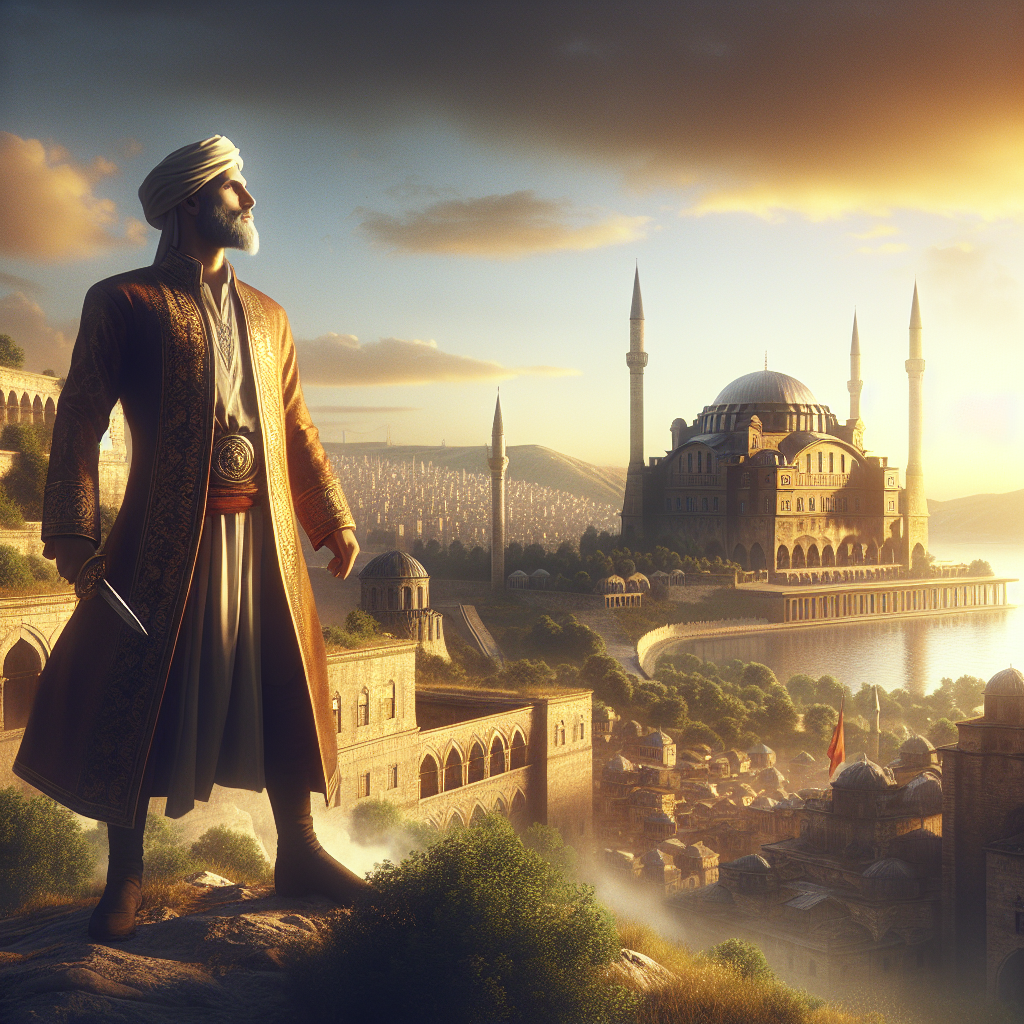In the annals of history, few names resonate as powerfully as Sultan Mehmed II, famously known as Mehmed the Conqueror. His military strategies during the siege of Constantinople in 1453 are hailed as some of the most revolutionary in the history of warfare. For students of history and warfare, understanding Mehmed’s approach not only offers insights into past conquests but also sheds light on the evolution of modern military techniques. This blog post will explore how Mehmed II’s ambitions, innovations, and relentless pursuit of victory reshaped the world—and how his strategies continue to influence military tactics today.
The Significance of the Conquest of Istanbul
The fall of Constantinople, which later became Istanbul, marked a turning point in world history. It signaled the end of the Byzantine Empire and the rise of the Ottoman Empire as a dominant force in both Europe and Asia. The city’s strategic location made it a coveted prize for centuries, controlling major trade routes between the East and West. Mehmed II’s conquest not only altered the balance of power but also set the stage for the Ottoman Empire’s expansion and prosperity. Understanding the significance of this event is crucial for grasping its impact on global politics, economics, and culture.
Sultan Mehmed II’s Vision for Constantinople

Mehmed II was not just a conqueror; he was a visionary leader who saw the potential of Constantinople as the heart of his burgeoning empire. His determination to capture the city was driven by both strategic and symbolic motives. Mehmed aimed to fulfill a prophecy that promised great power to the ruler who seized the city. His vision was to transform Constantinople into Istanbul—a vibrant, multicultural metropolis that would serve as the capital of the Ottoman Empire. This transformation was key to consolidating his power and establishing a legacy that would endure for generations.
The Decline of the Byzantine Empire
Breaking the Walls of History with Mehmed the Conqueror’s Military Mastery
Before Mehmed could realize his vision, he faced a weakened Byzantine Empire. The once-mighty empire had been reduced to a shadow of its former glory due to internal strife, economic hardship, and territorial losses. Constantinople, though still formidable, had become vulnerable. Its strategic importance, however, remained undiminished. Situated at the crossroads of Europe and Asia, the city was a hub of commerce and culture. Previous Ottoman attempts to capture Constantinople had failed, but these failures provided valuable lessons for Mehmed. He meticulously studied past efforts, identifying weaknesses and refining his strategy to ensure success.
Mehmed II’s Ambition to Conquer
Driven by an unyielding ambition, Mehmed II was determined to capture Constantinople and secure his place in history. His preparations were both exhaustive and innovative, laying the groundwork for one of the most famous sieges in history. Mehmed’s strategic foresight included forming alliances, both local and foreign, to isolate the city. He understood the symbolic and religious significance of Constantinople—not just a city, but a symbol of Christian resistance against Ottoman expansion. Mehmed’s resolve was fueled by the belief that conquering the city was his destiny, a belief that inspired his troops and intimidated his foes.
Military Innovations and Preparations
Under Mehmed’s leadership, the Ottoman army underwent a transformation that would prove pivotal in the siege of Constantinople. The introduction of massive cannons, capable of breaching the formidable Theodosian Walls, was a game-changer. These artillery innovations were complemented by the construction of the Rumeli Fortress, strategically positioned to cut off any potential naval assistance to the besieged city. Mehmed’s preparations also involved assembling a large, well-supplied army, which included elite Janissaries and skilled engineers whose expertise was crucial in implementing his complex siege tactics.
The Siege of Constantinople (April 1453)
The siege of Constantinople commenced in April 1453 with meticulous planning and coordination. Mehmed II deployed his cannons strategically, targeting the city’s strongest defenses—the Theodosian Walls. The siege was not merely a test of military might but of endurance and precision. Meanwhile, the Ottoman fleet played a critical role in maintaining a naval blockade, preventing any aid from reaching the beleaguered city. Mehmed’s forces encircled Constantinople from both land and sea, slowly tightening their grip and setting the stage for the eventual breach.
Challenges and Persistence
Despite facing formidable defenses, the Ottomans persisted with relentless pressure on Constantinople’s defenders. The Byzantines, though outnumbered, put up a determined resistance. They employed their own artillery, fortified key positions, and utilized Greek fire—a formidable incendiary weapon—to repel Ottoman assaults. However, Mehmed’s psychological warfare, combined with his tactical ingenuity, gradually wore down the defenders’ resolve. Efforts to secure European aid faltered, leaving the Byzantines isolated. Mehmed’s persistence and adaptability would eventually tip the scales in his favor, as the city teetered on the brink of collapse.
The Final Assault (May 1453)
After weeks of intense siege warfare, Mehmed II decided to launch a final all-out assault on May 29, 1453. The culmination of strategic bombardment, psychological warfare, and precise military coordination, this decisive offensive was marked by the use of tunnels to undermine the walls and a continuous barrage of cannon fire. Mehmed personally led his troops, inspiring them with his presence and leadership. The Ottoman forces breached the walls, overwhelming the defenders and signaling the fall of Constantinople. This momentous victory marked the end of an era and heralded the dawn of a new Ottoman age.
Aftermath and Transformation of the City
Following his victory, Mehmed II entered Constantinople and immediately set about transforming it into Istanbul—the new capital of the Ottoman Empire. His vision for the city was grand and multifaceted. Mehmed initiated extensive rebuilding efforts, inviting people from various backgrounds to repopulate the city and foster a sense of multiculturalism. The Hagia Sophia, a symbol of Byzantine Christianity, was converted into a mosque, signifying the city’s new role within the Islamic world. Mehmed’s transformation of Constantinople into Istanbul laid the foundation for the city’s future as a thriving center of commerce, culture, and politics.
Legacy of the Conquest
The fall of Constantinople was not just a military triumph; it marked a pivotal moment in world history. The conquest signaled the end of the Byzantine Empire and the rise of the Ottoman Empire as a dominant force. Mehmed II’s legacy as “Mehmed the Conqueror” was solidified by his successful campaign and the profound impact it had on global geopolitics. The conquest influenced European trade routes, sparking exploration and the eventual Age of Discovery. Mehmed’s strategic brilliance and visionary leadership continue to be studied and admired, underscoring the enduring significance of his achievements.
Conclusion
The conquest of Constantinople by Sultan Mehmed II in 1453 was a landmark event in history. His strategic innovations, military tactics, and unwavering determination transformed the city and reshaped the political and cultural landscape of the region. Mehmed’s legacy as a visionary leader and conqueror lives on, inspiring future generations to study and learn from his remarkable achievements. The capture of Constantinople marked the end of an era and the beginning of a new chapter in history—one defined by the rise of the Ottoman Empire and its lasting influence on the world.










